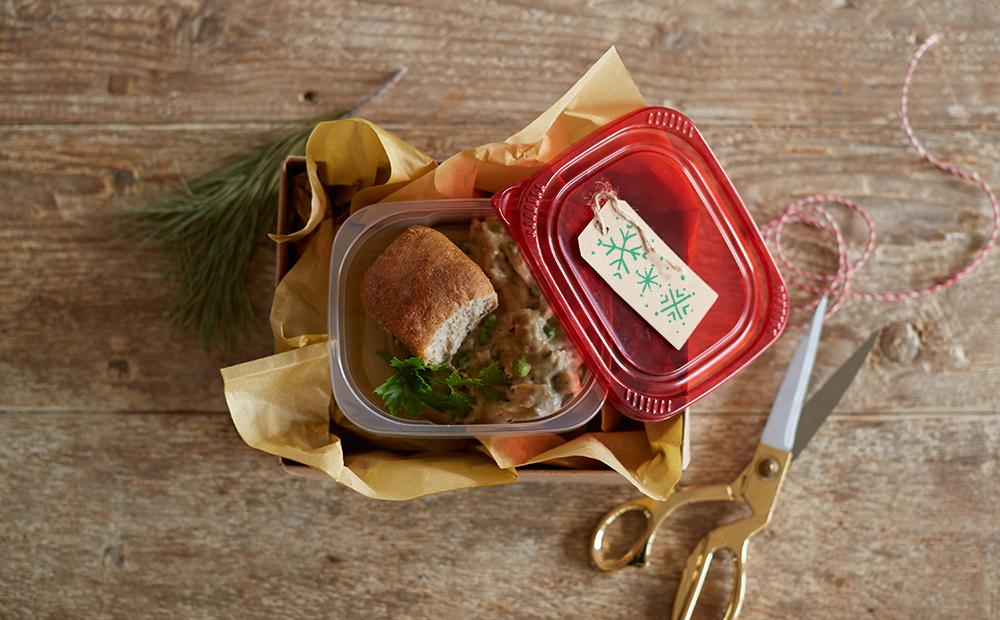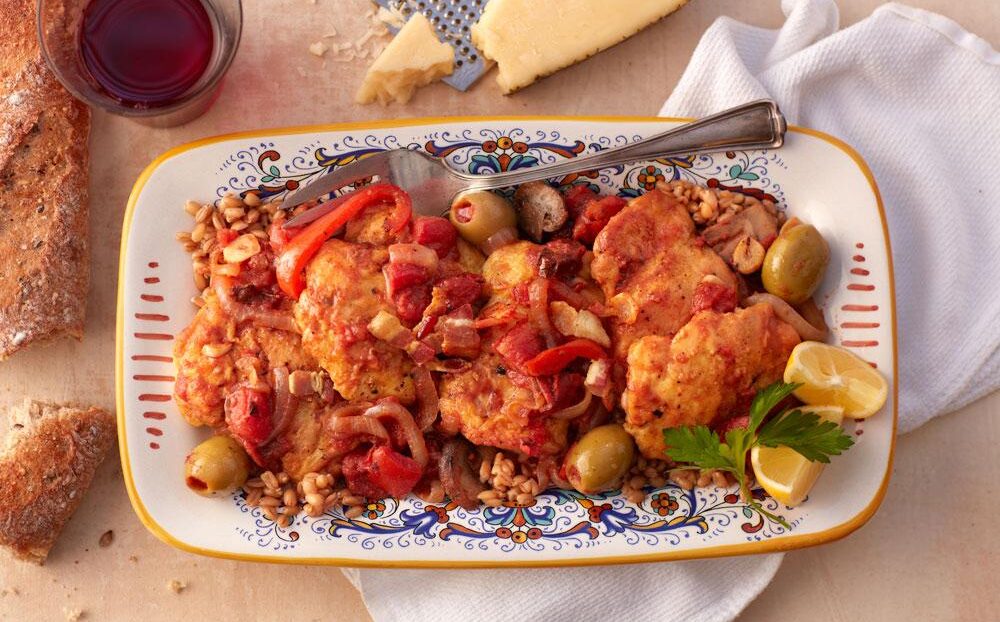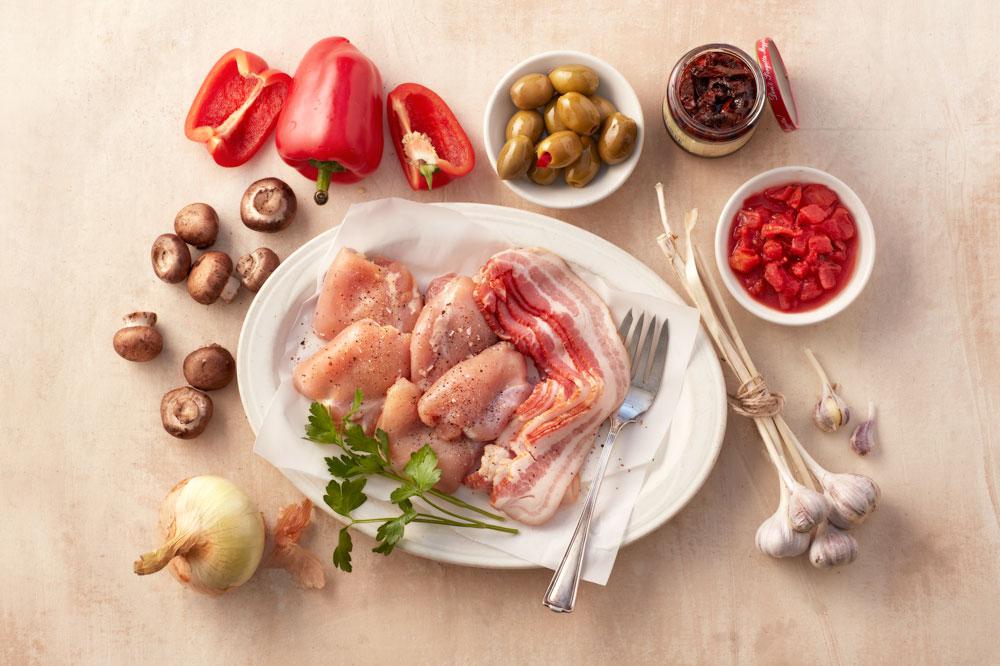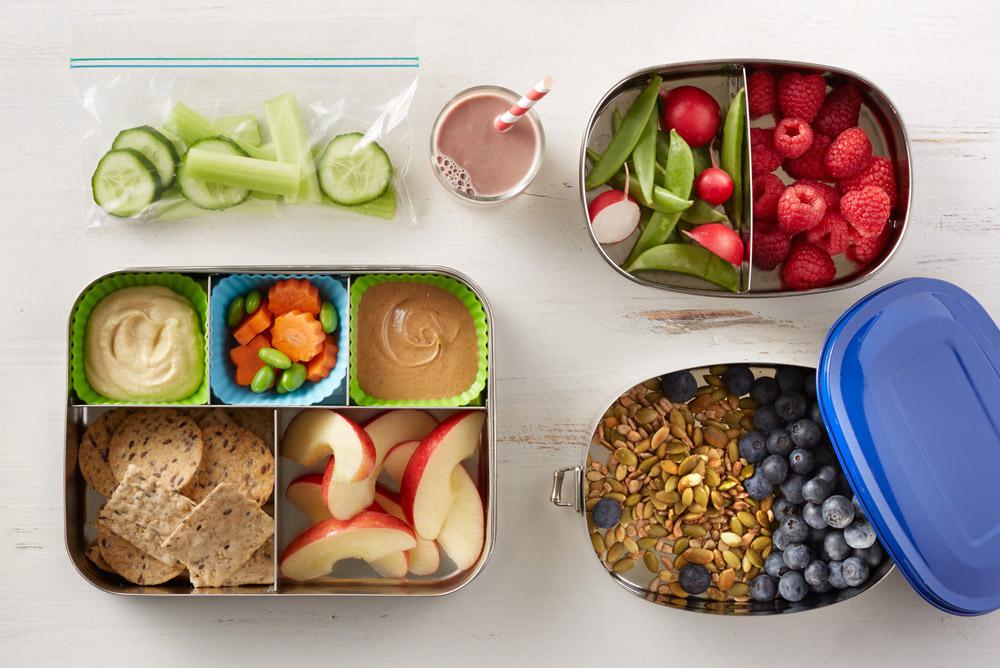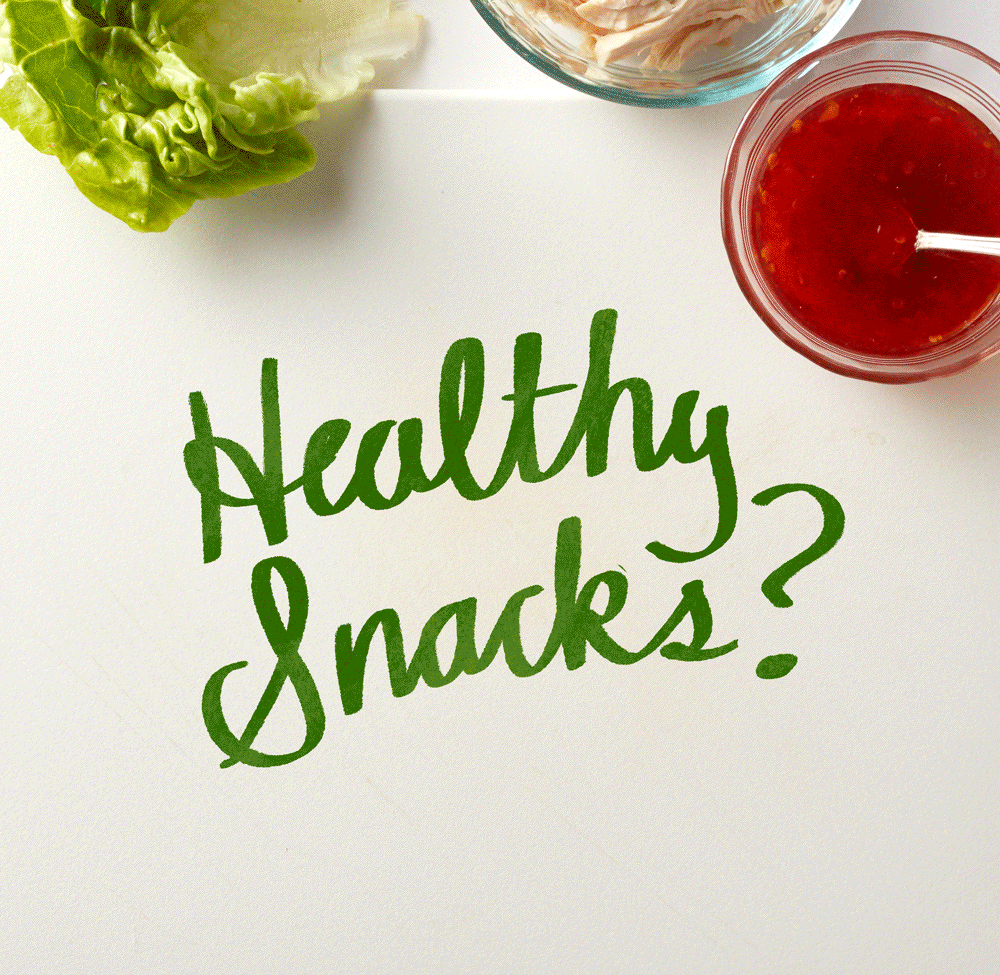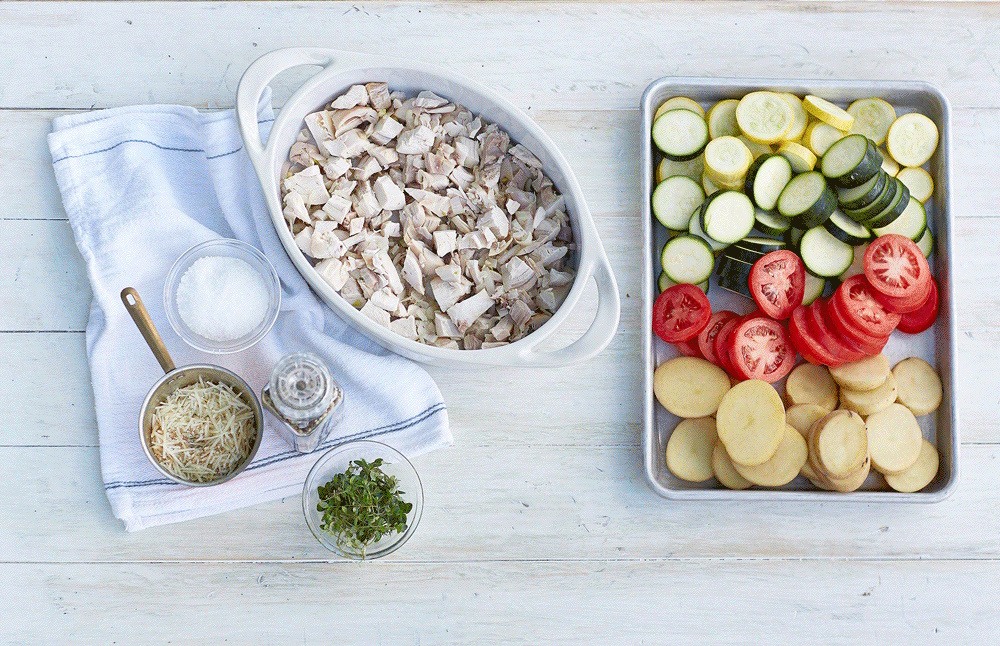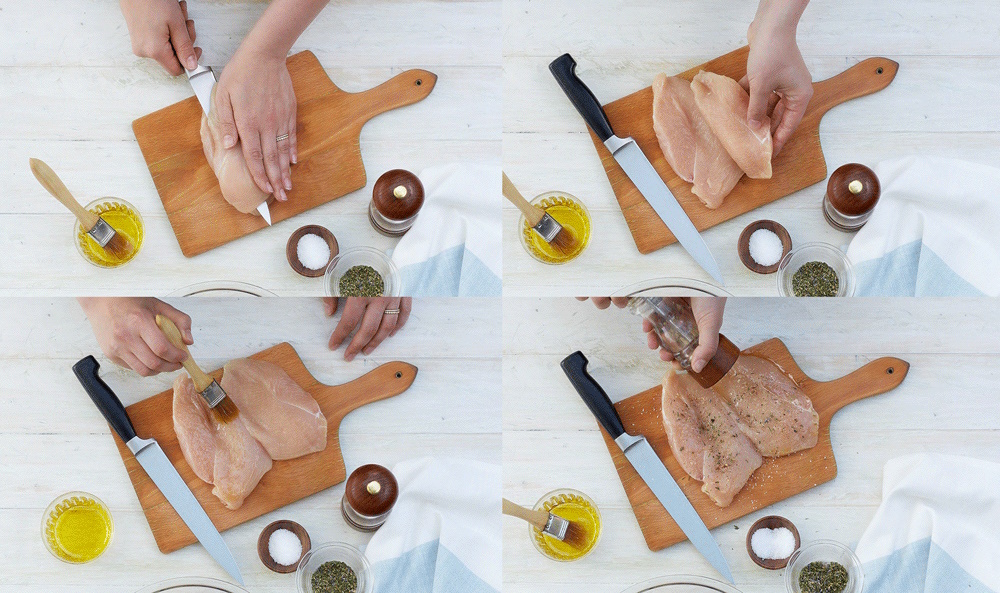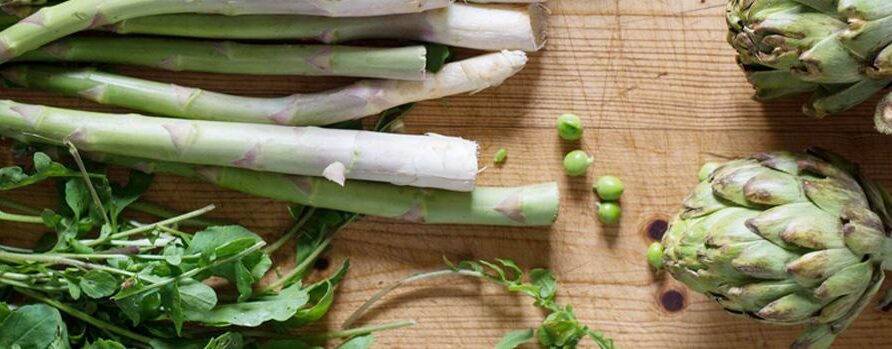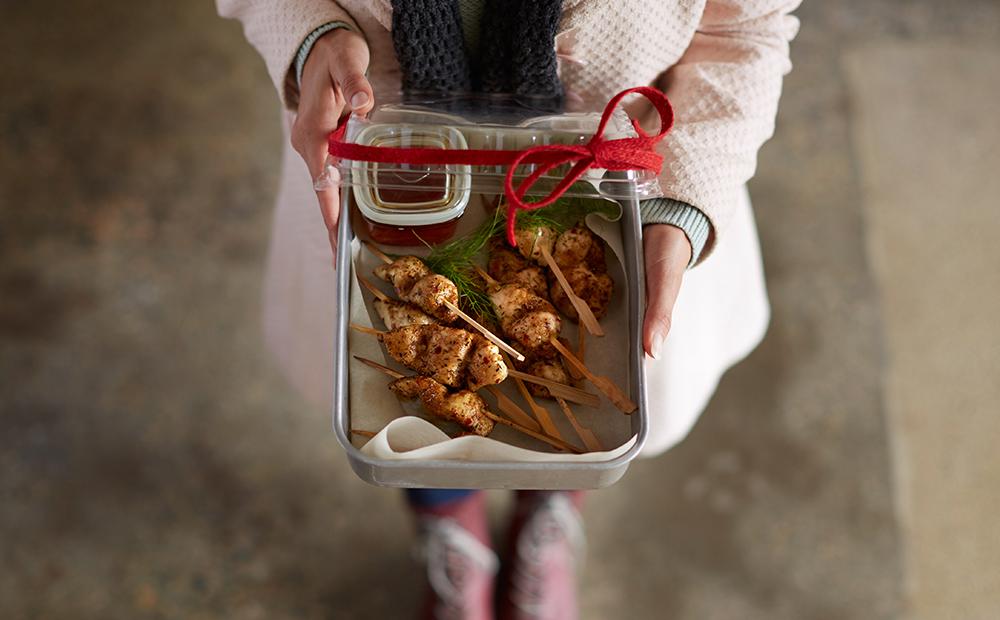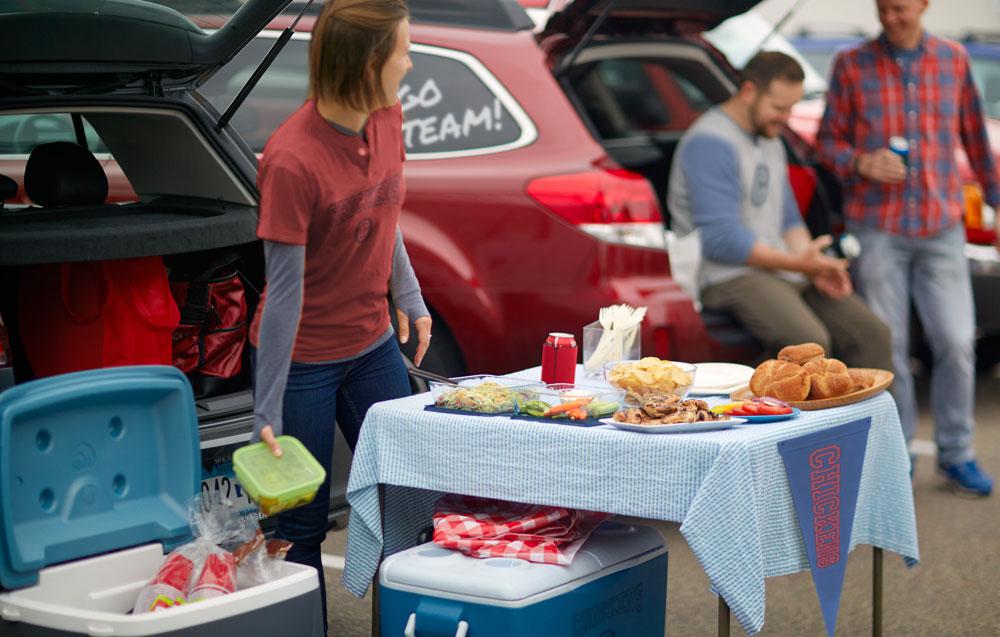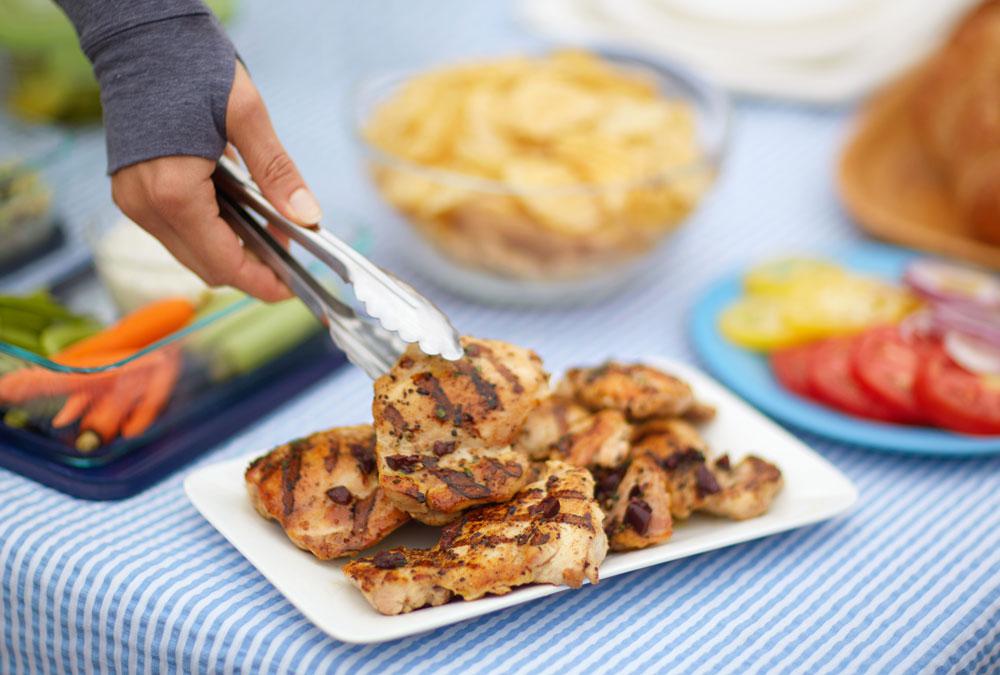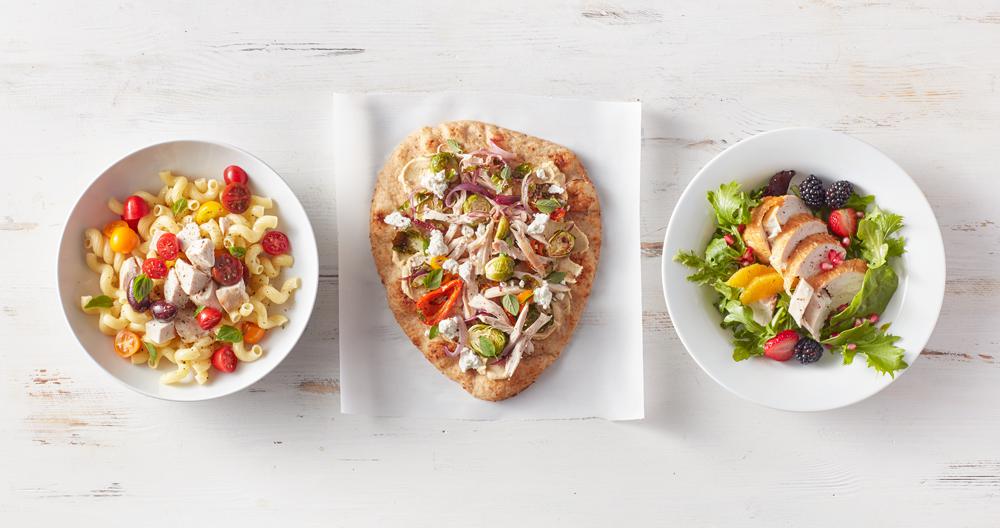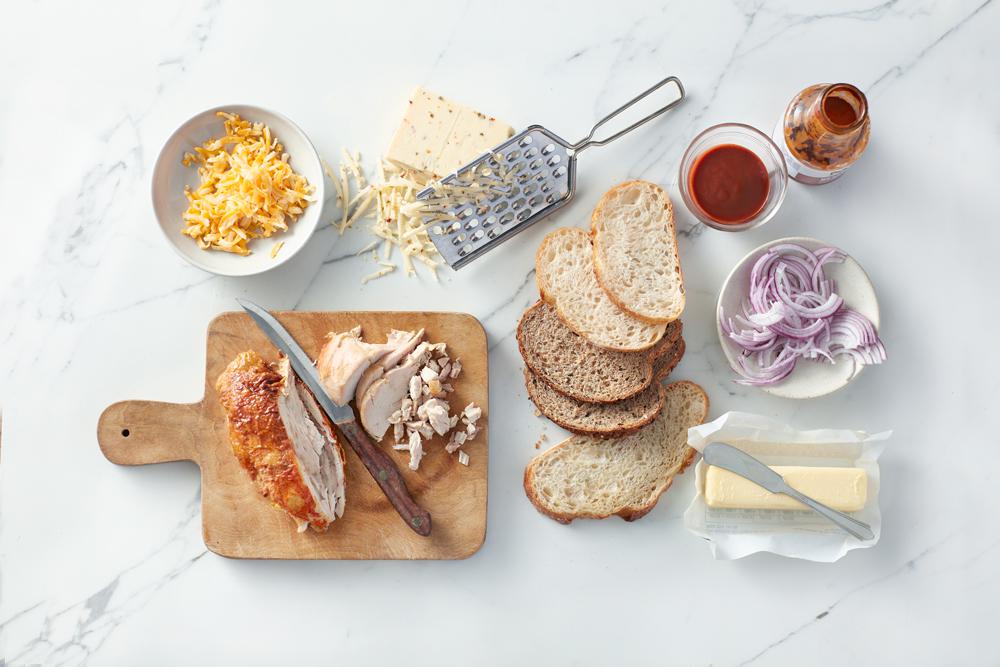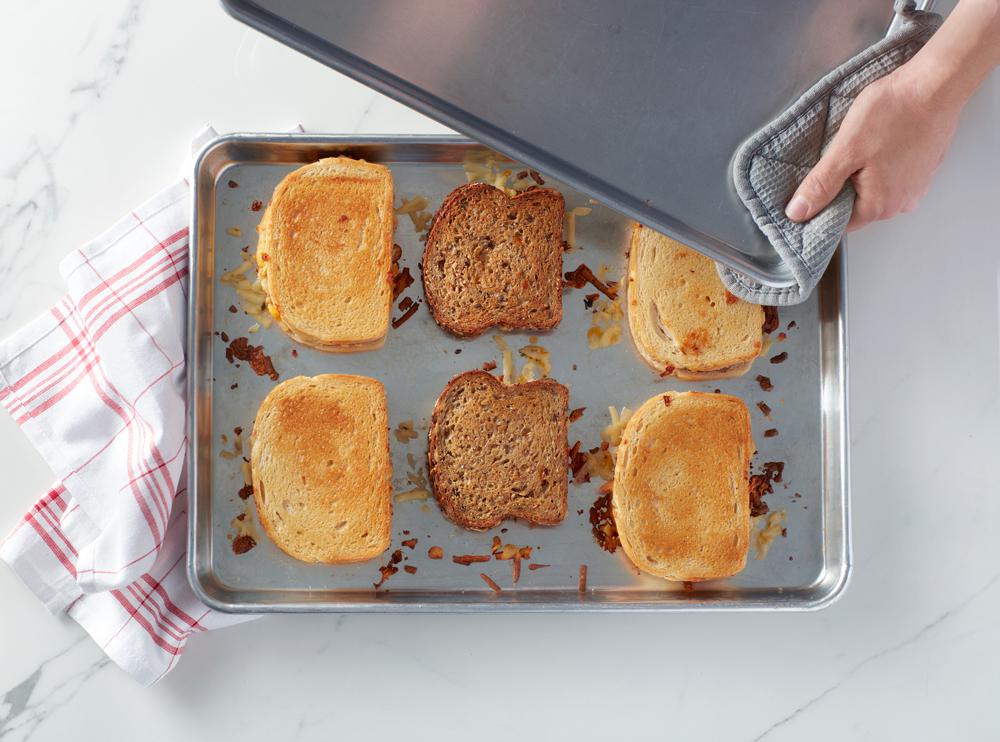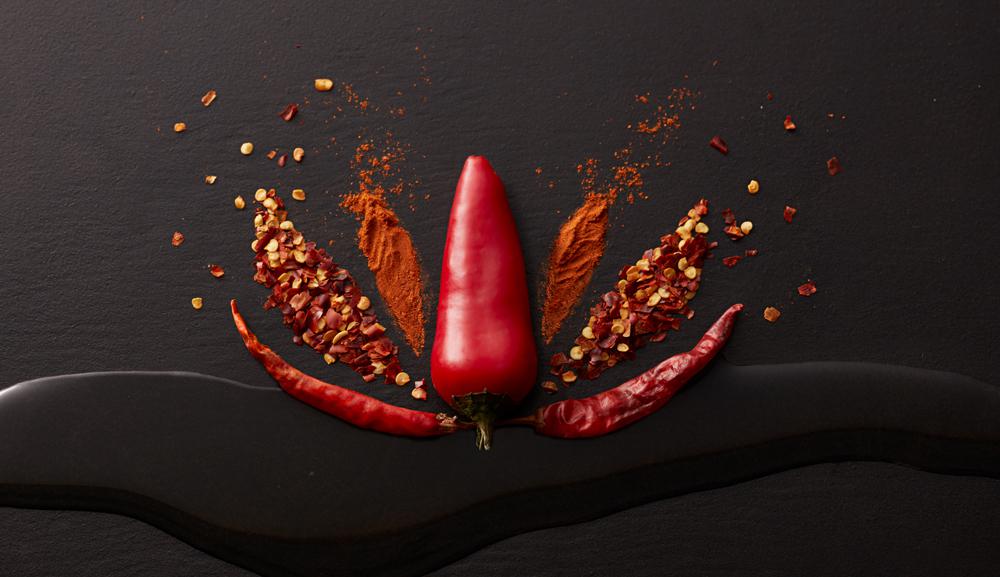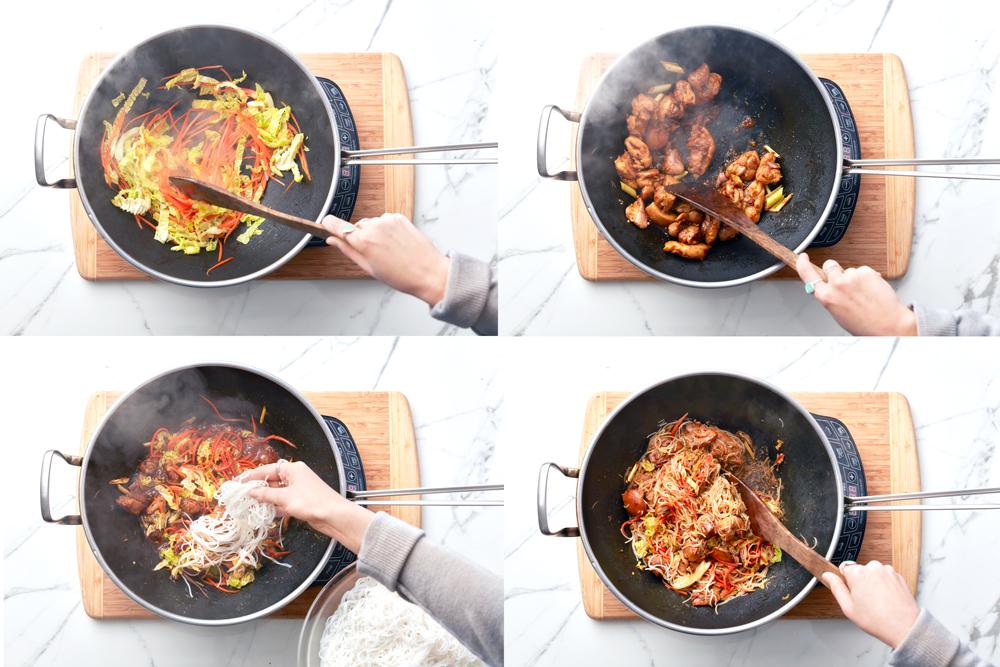Holiday cooking, take 2.
Even though they’re a busy home cook’s best friend, leftovers don’t always get the love they deserve. Maybe it’s the word itself — leftovers. It can seem like déjà vu all over again. But here’s a newsflash. Leftovers can actually be the starting point for something entirely different. This holiday season, it’s time for leftovers to get a do-over.
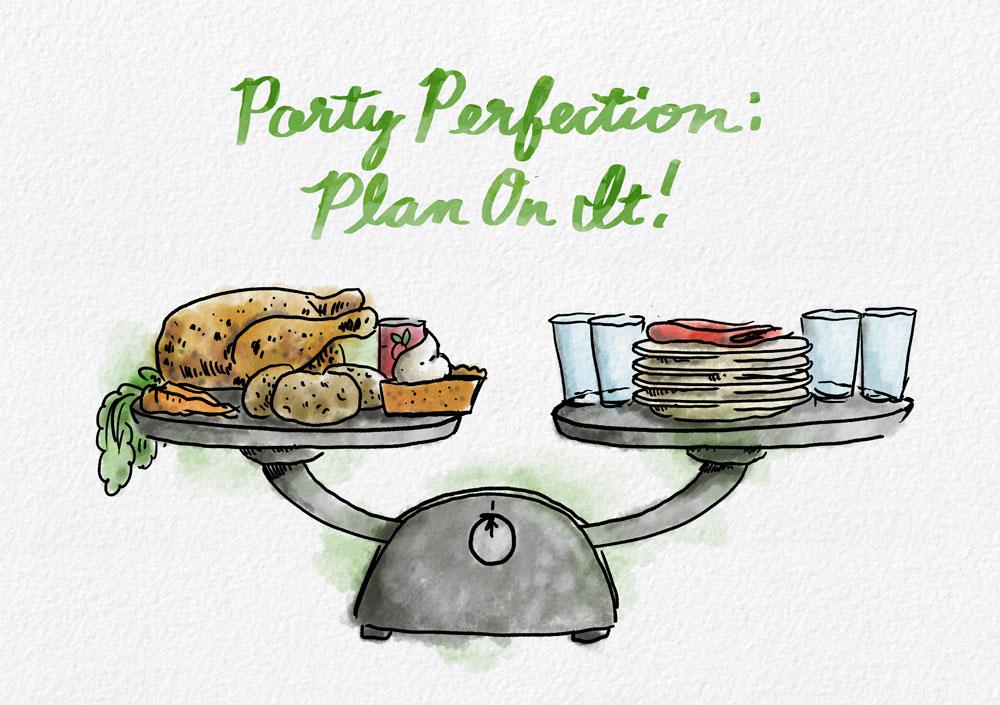
Have we met before?
Here’s the scenario. Over the weekend you prepared an elaborate feast, and naturally there were leftovers. That’s good, in particular the chicken and sweet potatoes. Because in the twinkle of an eye, a little holiday magic comes into play. It’s like giving yourself a present — an easy, healthy weeknight meal that cooks in 15 minutes.
Need some other ideas? Leftover herbed bread stuffing, cooked veggies, chopped chicken and eggs are all you need to make a great skillet supper frittata. If wild rice stuffing and cranberry sauce or chutney are on hand, consider making cranberry glazed chicken with wild rice pilaf. The possibilities for creative new combinations are endless. From traditional favorites new traditions can emerge.
Going, going, gone.
Another way to manage leftovers during the holiday season is to send them home with guests. It’s a tasty way to celebrate the festivities one more time. A little wrapping paper. Sparkly ribbon. Hand-written note. Suddenly, leftovers are transformed into a thoughtful expression of friendship, and the gift of food is one everyone can appreciate during the busiest time of the year.
Wait. How many people are coming?
It’s a good problem to have when more friends or family want to join a holiday get-together. Scaling up, though, doesn’t necessary mean simply doubling, tripling or quadrupling recipes. If the plan is for everyone to bring appetizers, for instance, the main course could grow in more modest proportions. A variety of online resources can help with menu planning.
As the holiday season moves into high gear, think of leftovers as the gift that keeps on giving. Twice as nice. Full of joy. Simply delicious.

